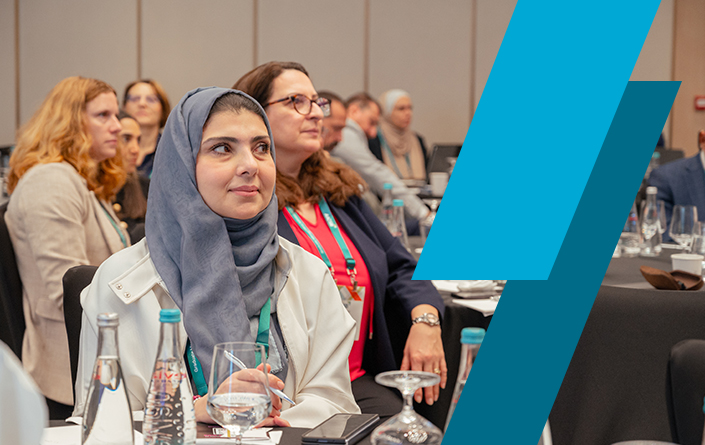Faculty Development: A Potential Game Changer
- The development center focuses on improving faculty skills in technical, managerial, behavioral, and research areas.
- Instructors at the center are sourced from institutions in India and abroad.
- Center leaders are looking at ways to track the training needs of professors and institutionalize the learning each faculty member requires.
Seven years ago, I proposed the idea of setting up a faculty development center at my school, the Birla Institute of Management Technology (BIMTECH) in Greater Noida, India. I had been heading BIMTECH’s marketing area for six years, and during the last two years I also had been leading its business communications area. I now wanted to be involved in something new that would leave a lasting impression on the institute.
At that time, faculty were participating in development programs on an ad hoc basis, but there was no formal plan for what they should attend and there was no structure in place for how they could be assessed by their department heads. I wanted to create a way for the school to ascertain and fulfill the individual developmental needs of all its faculty. I also wanted to align the center with BIMTECH’s mission of creating and disseminating knowledge in a global context and developing faculty as global thought leaders.
Our director was extremely receptive to the idea, and the BIMTECH Center for Faculty Development commenced in December 2015 under my leadership. A few months ago, I felt that the time was right to hand over the leadership of the center to a fresh incumbent. Since then, I have reflected on what we have achieved so far—and what remains to be done.
Plans and Objectives
When the center opened, it had five stated objectives:
- Identify the training and development needs of faculty to build their skills in technical, managerial, behavioral, and research areas.
- Help faculty develop skills and competencies through in-house and external training programs.
- Source competent faculty to teach in-house programs.
- Expand the cadre of faculty able to deliver both general and discipline-specific programs to corporate partners.
- In a phased manner, open the BIMTECH Center to external faculty.
We determined that the center’s key performance indicators (KPIs) would be the number of participants we had, the number of programs they attended, and the number of hours they spent participating.
The center’s first activity was to send out questionnaires asking the approximately 60 faculty at the institute what they considered to be their training needs in the five areas outlined above. While some responses were focused and others were generic, the answers enabled us to establish a useful baseline and consider possible directions for the future.
We also finetuned our operating structure. We first recruited a manager to handle record keeping and day-to-day activities and then formed an operating committee comprising the center head, the manager, and three faculty members. We decided to rotate the faculty every year to ensure an influx of new ideas and points of view.
Instructors and Subjects
To line up what became a truly eclectic slate of programming, we sourced instructors from eminent institutions in India and abroad. These included directors and thought leaders from the Indian Institutes of Management, as well as MICA, an Indian business school specializing in communication. Other instructors were experts from U.S. institutions, such as New York University, the University of South Florida, the University of Nebraska, and the University of Maryland.
Programming covered institution building and the development of skills in technical, managerial, behavioral, and research areas.
While some sessions were aimed at large groups of participants, others were small, specialized, and invitation-only. Programming generally fell into five broad categories:
Institution building. Sessions included the brand development process for institutions, the next horizon in Indian management education, and the impact of new education policies.
Technical skill development. Among the offerings were those on Blue Ocean strategy, blended learning and the flipped classroom, case writing, design thinking for banks and financial services, and exponential innovation.
Managerial skill development. Programs covered readying faculty for the future, empowering educators, improving teaching and learning effectiveness, developing storytelling skills, and developing advanced leadership competencies.
Behavioral skill development. In these sessions, participants’ learning included the fundamentals of cross-cultural communication, psychometric assessment, organization strength analysis, and advanced communication approaches.
Research skill development. Programs covered managing funded research projects; learning mixed method approaches to management research; identifying a phenomenon of interest; using the software language R to conduct text mining; and developing skills in data analysis, Python programming, and digital marketing.
Owing to popular demand, we ran encores of several programs, including those focused on case writing and development, research methods, and institution building.
Stats and Outcomes
Since the Center for Faculty Development was inaugurated seven years ago, it has organized 54 in-house programs and sent faculty to 91 external ones. All programs were attended in-person except those held between March 2020 and January 2022, due to COVID restrictions.
While programs varied in length from half a day to three days, the average BIMTECH faculty member has spent five days a year attending sessions. In total, the center has provided 1,935 days of in-person training to faculty. Faculty also have been encouraged to attend long-duration development programs online, an addition that takes the total training hours to more than 2,000.
As I see it, the center’s programs have had three primary positive outcomes:
First, all 60 BIMTECH faculty have been involved in general programs. Many also have undertaken programs specific to their interests. Department heads and members of the center committee have nominated faculty to attend programs both at the center and externally.
Today, the center is well on its way to becoming a facilitator rather than a driver of faculty development.
Second, faculty have realized that professional development is their own responsibility and in their best interests. Today, the number of faculty asking to be sent to particular programs has increased dramatically, and the center is well on its way to becoming a facilitator rather than a driver of faculty development.
Third, we have extended our offerings beyond the borders of our campus. Not only are faculty from other institutions attending paid open programs at our center, but faculty from our school also are delivering management development programs to corporate partners. Popular topics for these corporate offerings are leadership, decision making, design thinking, and function-specific skills.
Room for Improvement
Despite our successes, I see plenty of opportunities for growth. I believe the center could have a greater impact if leadership would take these five steps:
Re-examine the KPIs and their underlying assumptions. Tracking the number of days each faculty member participates in training does not reveal whether there were relevant programs available for that professor in a particular year. Additionally, the numbers do not indicate whether an individual faculty member has actually learned something during the training sessions, or applied this learning in various spheres of work. New KPIs might uncover some of these data.
Constantly scour the types of programs offered by other institutions. This would generate ideas about new programs that could be developed by the center at BIMTECH.
Develop a robust system for tracking the training needs of individual professors. If the center monitors which programs faculty have already attended, it should be able to proactively suggest other programs professors should consider attending. Needless to say, the center needs an adequate budget to be able to carry out this task. To that end, training needs to be viewed as a long-term investment rather than a cost center.
Institutionalize the learning that faculty have acquired. One option is to require faculty returning from training programs to give presentations to their peers so they can share the knowledge they have gained in particular programs. While this has happened sporadically at BIMTECH in the past seven years, such presentations should be made mandatory.
Measure whether faculty are utilizing their new training in their ongoing work. This kind of performance appraisal lies outside the scope of the center, but it is a productive idea for school leadership to consider. Such an appraisal would require the school to conduct a wide-angle assessment of each faculty member’s development over a time span of perhaps three years. It also would require the school to invest significant time and extensive coordination in performance appraisals.
With these possibilities in mind, my successor and I have formulated a road map for the center’s future, which includes these four steps:
- Structure a medium-term approach to faculty development.
- Ensure the continuing alignment of faculty development needs with BIMTECH’s vision, mission, values, and strategic plan.
- Engage in a 360-degree process to identify faculty development needs. Have conversations with individual professors, BIMTECH leaders, and chairpersons of the various areas and programs.
- Develop and implement an integrated four-year faculty development plan.
From Good to Great
My hope is that any business school setting up a similar faculty development center can profit from our learnings and shorten the time it takes to establish relevant KPIs and learning metrics. I would stress that, if these other schools want to create truly effective centers, they must secure the proactive involvement of many stakeholders to support and assess the contributions their centers make to faculty development.
Ultimately, every business school will determine its own direction, based on its vision, mission, and strategic plan. But developing its faculty is a task much too important to leave to chance. If a center for faculty development is given the right attention and adequate resources, it can prove to be a game changer. It can turn a business school from a good one into a great one.






